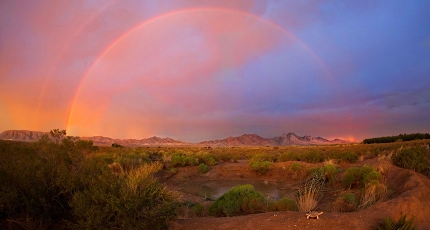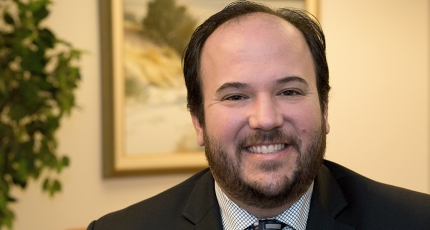Overview
Natural resources developers, real estate developers, bankers and other lenders, railroads and private landowners rely on Modrall Sperling’s representation when issues regarding cultural and historic resources arise. As these resources are the important remains of a people’s culture, their management has emerged as a significant consideration for both publicly and privately held lands. Today, there is an intricate and complex body of law designed to protect these resources, which can include archeological sites, locations of important historical events, sites of value to existing cultures, and even natural landscapes. Cultural and historic resources are often located on and within vast areas of federal, state, and tribal lands. They can also be located on purely private lands.
Since 1984, our lawyers have been involved with cultural and historic resources issues in administrative and litigation proceedings and discussions with State Historic Preservation Officers, the federal Advisory Council on Historic Preservation, Indian tribes and pueblos, and other groups. In the mid-1980s, we represented timber interests in litigation in federal court in New Mexico involving efforts to enjoin all timber sales in New Mexico and Arizona until the United States Forest Service had undertaken a comprehensive cultural resources inventory of all National Forest system lands. More recently, the firm has been involved in development activities on federal public lands that present land use conflicts issues between the proposed development and cultural resource and sacred site preservation.
With its rich history, New Mexico is home to a large number of cultural resources. However, because our public lands lawyers are widely experienced, frequently published and nationally recognized, clients well beyond New Mexico’s borders call on us to navigate the numerous and varied statues and regulations at both the state and federal levels. Our national experience includes matters in the greater Southwest, the Mountain West, the Pacific Northwest, the Gulf Coast, and New England.
Attorneys practicing in this area have been recognized in Best Lawyers in America®, Chambers USA Directories of America’s Leading Lawyers for Business, Southwest Super Lawyer® including having been named among the Top 25 Super Lawyers in New Mexico.
Walter Stern and Stan Harris co-authored “Cultural Property Law: A Practitioner’s Guide to the Management, Protection, and Preservation of Heritage Resources,” which remains a seminal treatise on the topic. In addition, our cultural resources lawyers have long been officers and members of various key industry groups, including the American Bar Association’s section on Public Lands and the Foundation for Natural Resources and Energy Law (f/k/a Rocky Mountain Mineral Law Foundation), frequently presenting papers at meetings of national scope.
Experience
Our experience incorporates all aspects of cultural resource law and litigation. We manage permitting, cultural resource compliance efforts, administrative appeals proceedings, and litigation and other dispute resolution proceedings. Our clients are equally varied: coal and uranium mines, electric generation and transmission, hard and precious minerals, utility-scale wind and solar developments, oil and gas developers, pipeline operators, and refineries. Additionally, our lawyers have strong relationships with the relevant regulators, a key to getting projects successfully permitted and operational.
Permitting and Compliance
Our integrated practice assists clients with cultural resource compliance issues, including counsel, administrative appeals, and litigation services relating to:
- Federal, state, tribal, or other permits
- Federal, state, tribal, or other laws, such as:
- National Historic Preservation Act and its important Section 106 process that is triggered by any ground-disturbing activities arising on federal or Indian lands or requiring some form of federal approval, permit or license
- National Environmental Policy Act
- Native American Graves Protection and Repatriation Act and its requirements concerning the protection of Native American burial grounds and associated objects
- Antiquities Act
- Archaeological Resource Protection Act
- The range of other federal and state cultural and historical management statutes, tribal protection acts, and Executive orders governing historic properties, sacred sites, tribal consultations and related matters
- Advice regarding consultation with Native American tribes
- Counsel regarding federal, state, tribal, or other laws that may be triggered, even if the activity is conducted wholly on private land
- Notice of violation from the relevant regulatory agency
- Proposed new or revised rules that affect ongoing operations
Administrative Proceedings, Appeals of Agency Decisions, and Litigation
We frequently appear before and provide input to public regulatory agencies. These include:
- Bureau of Land Management
- U.S. Forest Service
- Bureau of Indian Affairs
- Office of Natural Resources Revenue (formerly Mineral Management Service)
- Interior Board of Land Appeals
- Advisory Committee on Historic Preservation
- New Mexico Cultural Properties Review Committee
- New Mexico Oil Conservation Division and Commission
- New Mexico Public Regulation Commission
- Commissioner of Public Lands
- New Mexico Taxation and Revenue Department
- New Mexico Environment Department
We also represent clients in appeals of agency decisions and other litigation in state and federal district and appellate courts involving cultural resource issues. We have experience working on a variety of cultural resources issues, including:
- Representing companies in challenges to federal agencies’ National Historic Preservation Act /National Environmental Policy Act determinations regarding adverse effects to cultural properties
- Representing companies in obtaining permits in the vicinity of areas asserted to be sacred sites and the location of cultural resources
- Represented a major uranium mining company and a group of mineral interest owners in challenging a New Mexico agency’s designation of over 700 square miles of the Grants uranium belt as a “traditional cultural property” at the request of five nominating tribes and pueblos
- Represented an exploration company in obtaining a Mining Act permit in the vicinity of areas asserted to be a sacred site and the locus of cultural resources
- Counsel to major natural resources company in litigation and settlement of issues involving an archeological site near a rail spur access road serving coal facilities
- Transactional and litigation counsel to the owners of a tract within the boundaries of the Manzano Land Grant community believed to be the locus of a 17th century Spanish industrial mining complex, including successful resolution via state court settlement and entry into an archeological resources agreement, among other instruments
Attorneys
Stuart R. Butzier
Shareholder
Joan E. Drake
Shareholder
Spencer L. Edelman
Shareholder
Stan N. Harris
Shareholder
Yarithza Peña
Associate
Lynn H. Slade
Shareholder
Walter E. Stern
Of Counsel










